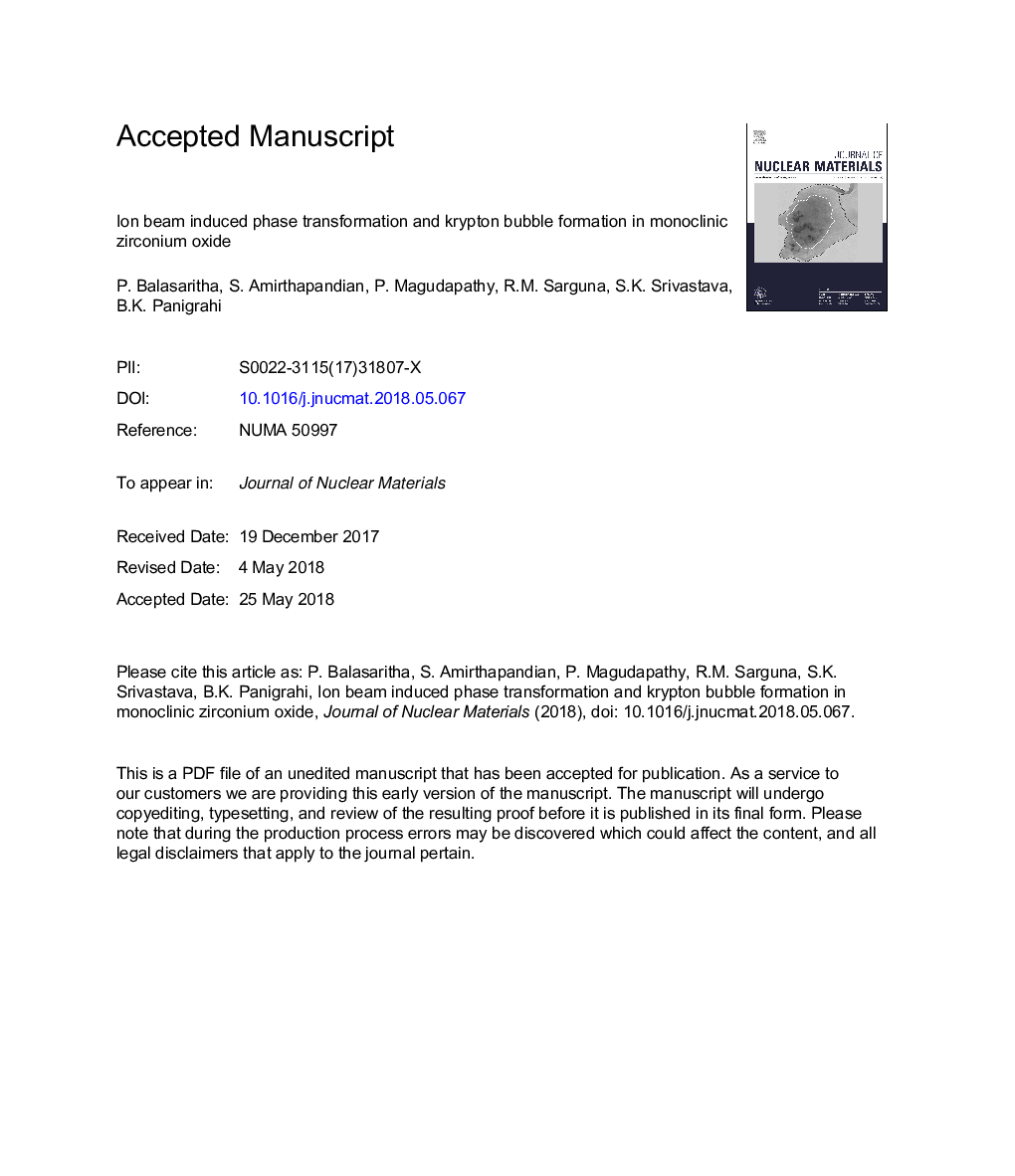| Article ID | Journal | Published Year | Pages | File Type |
|---|---|---|---|---|
| 7963072 | Journal of Nuclear Materials | 2018 | 30 Pages |
Abstract
Low energy krypton ion beam induced phase transformation and bubble formation in monoclinic zirconia (ZrO2) has been studied using electron microscopy, Raman scattering, grazing incidence X-ray diffraction and photoluminescence spectroscopy. The zirconia samples were synthesized by the thermal decomposition method and 60â¯keV Kr+ ion irradiation was carried out at 300â¯K and 143â¯K. The as-sintered ZrO2 particles were found to be monoclinic in structure, however, upon 60â¯keV Kr+ ion irradiation, a fraction of the sample (â¼4.9% (300â¯K) and â¼8.3% (143â¯K) for the ion fluence of 1â¯Ãâ¯1017â¯ions/cm2) was transformed from monoclinic to tetragonal phase along with the formation of krypton bubbles. The size of the bubbles is found to increase with the ion fluence, irrespective of the sample temperature during ion irradiation. The phase transformation from monoclinic to tetragonal structure was mainly due to radiation damage process where the driving force is strain field associated with the O-vacancies. The monoclinic to tetragonal transformation rate is faster when the ion irradiation was carried out at 143â¯K and this is attributed to the immobility of defects and production of large number of oxygen vacancies. The krypton bubble formation might be hindering the monoclinic to tetragonal phase transformation rate.
Related Topics
Physical Sciences and Engineering
Energy
Nuclear Energy and Engineering
Authors
P. Balasaritha, S. Amirthapandian, P. Magudapathy, R.M. Sarguna, S.K. Srivastava, B.K. Panigrahi,
